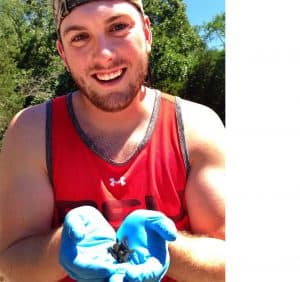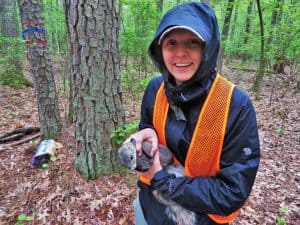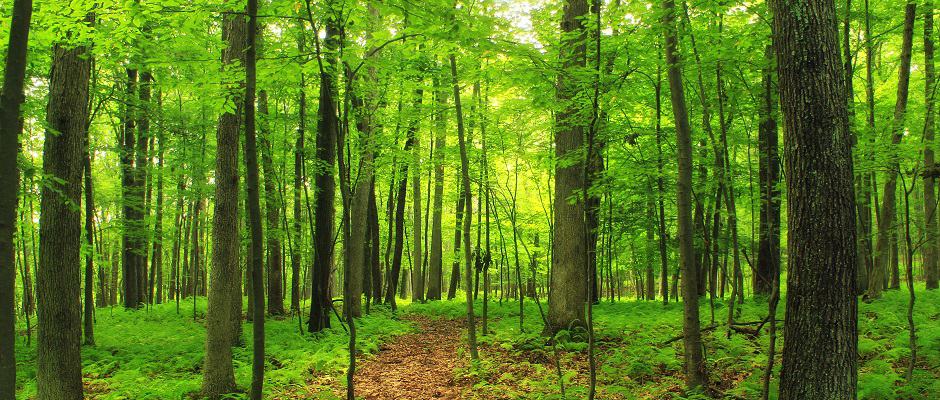Share this article
Have natural resource programs surpassed carrying capacity?
As graduation creeps closer, or for some has passed, the looming question is, “What is next for me?” The surge of U.S. Fish and Wildlife jobs in the last month has stopped some of the worry, but what will happen with the new administration? Can I find an assistantship? Are there any jobs in my home state? Will there be any upward mobility any time soon? These are some of the questions that we all play over and over in our minds as we try to plan our futures. The question that I have been pondering lately is, “Are we too saturated with natural resource graduates for the amount of jobs that currently exist?”
Now I am not saying more wildlife professionals are a bad thing, but I do want all of my peers to be able to acquire a job in our field. According to the National Center for Education Statistics, 5,865 students received bachelor’s degrees in fields related to natural resources and conservation in 1993. By 2004 that number had grown to 8,797 students and in 2013 that number doubled to 16,510 students that graduated with bachelor’s degrees in natural resources. To put that into perceptive, there are currently 21,300 jobs as zoologists/wildlife biologists in the Unites States according to the Bureau of Labor Statistics.

Work experience is one component of the Certified Wildlife Biologist® certification. Andrew Byers interned on an eastern small-footed bat project in southern Illinois. ©Kristi Confortin
These numbers are troubling to me as they equate to replacing the entire job force with our recent graduates every 1.3 years. So now the question is, are we hurting our students by increasing our enrollment in natural resource programs? Sure, we still have plenty of wildlife programs around the country that have small class sizes, but we also have a decent number of programs that are starting to have 24-60 students in each class. Those large class sizes can have effects on the learning experience of the students, while also hindering the logistics, such as how to take students on field trips for hands-on learning. I wonder if we should start being selective of whom we let into our programs, or if we will need to put a cap on the number of students we accept into natural resources and conservation programs. These are the criteria nursing and veterinary programs have put in place to limit the number of professionals in their fields. Is this the direction natural resource programs need to take in the future? That is a question for current and future administrators and professors to consider.
Now the good news: you are already ahead of your peers by being a member of The Wildlife Society, or at least a member of your student chapter of The Wildlife Society. You have gained experience with your chapters in outreach, fundraising, habitat manipulation, collecting biological data at deer check stations, interacting with the public, campus improvement projects, professional development, and networking. You have pursued internships and volunteer opportunities to set yourself above the rest. And though the road is unknown, you are unwavering in your pursuit of your perfect career. There will be jobs you dislike and there will be jobs you love, but they will both be just as important in molding you into the wildlife professional you will become.
The road to a career just became rockier with the federal hiring freeze, but in the struggle, we become stronger professionals. There are still jobs for us, but they might not be as easy to see. We must broaden our search image to incorporate research assistant and technician positions at universities, positions within non-profit organizations, state positions beyond the natural resource realm, and environmental consulting opportunities. We cannot predict the future, but we can always make ourselves better and more competitive in the job market.

Work experience is one component of the Certified Wildlife Biologist® certification. Laken Ganoe assisted with a Delmarva fox squirrel project in Maryland. ©Dr. Carol Bocetti
In the meantime, I recommend pursuing your Associate Wildlife Biologist® certification through The Wildlife Society. This certification quantifies your coursework and provides evidence that you can represent the profession based on that coursework. The Associate Wildlife Biologist® certification also allows you to accelerate your Certified Wildlife Biologist® certification, which requires extensive coursework and work experience. Both are highly valuable and can set you apart from the other 16,510 natural resource graduates. In fact some state agencies will even give a 3% raise to Associate Wildlife Biologists® and another 3% raise to Certified Wildlife Biologists®. I received my Associate Wildlife Biologist® certification the fall after completing my bachelor’s degree (2013) and it has proven beneficial in securing my M.S. assistantship and jobs. The best time to apply is immediately following graduation, when you can receive a discount on the application fee.
Landing your first internship or job might seem like a daunting task, but do not be discouraged. Keep pushing forward and the doors that were meant for you will be opened.
Phillip Stephenson is a current graduate student at the University of Arkansas-Fayetteville. He serves as the Secretary for the University’s TWS Student Chapter and is also the Chair-Elect of the Student Development Working Group. His article originally appeared in the Spring 2017 newsletter for the Student Development Working Group.
Header Image: ©Nicholas A Tonelli








